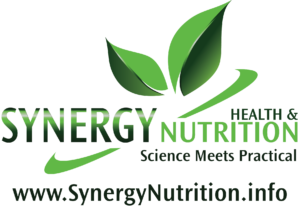Are Alzheimer’s, weight gain and obesity, cancer, diabetes and heart disease all the same health problem?
I think so. And so do many other researchers today. What they all have in common is excess inflammation in the body. And any time some really interesting new piece of the inflammatory puzzle hits the science headlines, pharmaceutical and biotech companies start promoting how they’ll develop novel anti-inflammatory drugs to block these natural proteins to finally solve the problem of unquenchable pain and inflammation.
And one such amazing piece of the inflammatory puzzle—amazing to molecular biology or biochemistry nerds like me—just put together some pieces not before known. For 20 years it has been more than clear that metabolic syndrome, autism spectrum disorder, autoimmune diseases, and many more named disease states are just inflammation run amok. But this is a story where the myopic tunnel vision of big pharma leads to a dead and useless end.
Short-term or acute inflammation is a good thing: It’s the body’s natural response after an injury or infection, and it restores normal tissue structure and function. The problem is when there is too much inflammation for the circumstances or it doesn’t shut off; that is a bad thing—that is disease.
 The normal, healthy inflammatory sequence:
The normal, healthy inflammatory sequence:
1.The body senses a foreign invader: A microbe, virus, parasite… or perhaps there is an injury… or possibly some other damage to cells caused by chemicals or even cell abnormalities. Anything deemed “foreign” to the body is detected and handled in much the same way.
2. Once the foreign invader or injury is spotted, specialized cells in the affected area release pro-inflammatory hormones. These tiny hormone messengers—think New York City bike couriers that take your urgent dispatch uptown to headquarters—begin a coordinated inflammatory response.
 3. More inflammatory hormones trigger local swelling and pain, various types of white blood cells follow the hormone trail to the area, and a self-protective mechanism triggers pain and loss of function (presumably so you’ll rest the affected area, steer clear of re-injury, and let it heal).
3. More inflammatory hormones trigger local swelling and pain, various types of white blood cells follow the hormone trail to the area, and a self-protective mechanism triggers pain and loss of function (presumably so you’ll rest the affected area, steer clear of re-injury, and let it heal).
4. This continues as long as the body detects that initial “alert” signal.
5. Then, as soon as whatever caused the problem is now under control, these initial pro-inflammatory messenger molecules are no longer needed. Molecular changes in the cells allow them to mop up and break down these pro-inflammatory hormones.
If the pro-inflammatory hormones aren’t removed, their presence tells the body to keep the painful, swollen, fatigued first stage of inflammation going.
One way these hormones are rendered ineffective is for cells to bind a new protein to the pro-inflammatory hormone (and/or its receptor). That sleek, efficient, NYC bike messenger doesn’t just get a flat tire, she’s given a 200 pound brick to lug around!
Just as the liver attaches glutathione and other large anti-oxidant molecules onto toxic chemicals that need to be cleared from the body, your cells everywhere can clean up locally by attaching a family of proteins called the ubiquitins onto the hormone messengers (and/or the cell receptors that recognize those hormones).
 The recent, hot news in the molecular world, is that a pair of cellular proteins (lovingly named Tollip and Tom1), when activated, now work together to clear these ubiquitin-tagged hormones out of the cell. Apparently, when Tollip joins up with Tom1, these proteins form a unit that can clear out molecules involved in the pro-inflammatory response much more efficiently than either protein can on its own.
The recent, hot news in the molecular world, is that a pair of cellular proteins (lovingly named Tollip and Tom1), when activated, now work together to clear these ubiquitin-tagged hormones out of the cell. Apparently, when Tollip joins up with Tom1, these proteins form a unit that can clear out molecules involved in the pro-inflammatory response much more efficiently than either protein can on its own.
Life forms from bacteria to worms to humans all use this ubiquitin system to remove hormones and proteins once their message is “heard”—secret agent 007 and the self-destructing mission data.
And if there has been cell damage beyond repair, this same system will tell the cell to self-destruct (programmed cell death).
While drug companies seek to manipulate the interaction between Tollip and Tom1 to more efficiently “turn off” the inflammatory response, it may not be so smart to mess with the back end of the system without first protecting the body.
Proteins are used and undergo wear and tear. They can become damaged and misshapen; brittle and stiff (think wrinkles and age); metals, sugars and toxic chemicals can bind to them… So it might seem like enhancing the clean-out side of the system could be a good thing—get rid of those old, stiff, damaged parts—makes sense. But the old must be replaced with new.
Stop stressing the system!
 Diseases like rheumatoid arthritis, Amyotrophic lateral sclerosis (ALS), multiple sclerosis, the arterial inflammation of heart disease, diabetes, and even the inflammation associated with weight gain continue because at the molecular level, the “alert” signal is still there. The stressor’s still around! The proteins have become old, altered and degraded—and there is no new building material.
Diseases like rheumatoid arthritis, Amyotrophic lateral sclerosis (ALS), multiple sclerosis, the arterial inflammation of heart disease, diabetes, and even the inflammation associated with weight gain continue because at the molecular level, the “alert” signal is still there. The stressor’s still around! The proteins have become old, altered and degraded—and there is no new building material.
What “modern medicine” wants to do is turn off the fire alarm and blow the smoke out the windows while doing nothing about putting out the fire. The inflammatory trigger is still there!
Chemicals, pesticides, medications, heavy metals, sugar… doesn’t it make sense to stop putting these in the body? But that isn’t being discussed in these circles. Just remove the parts that are telling the body it has been injured—and do it faster! They say.
Some good food news:
Certain foods and natural health players help the clean-up process and/or prevent it from being needed to begin with. If you are willing to reduce and eliminate key stressors, and are committed to eating a balanced diet, you may be able to clear up symptoms of chronic inflammation more quickly with a host of appropriate foods and even green tea.
A balanced diet keeps this system balanced.
(and why fasting diets and imbalanced fad diets are dangerous.)
This ubiquitin system is also your protein “quality control” department. When proteins aren’t made properly to begin with or become damaged in use, they are detected and removed by this system.
Inappropriate food, poor diet, too low calorie intake restricts the amount of building blocks the body has to work with.
The body begins to break down cell proteins, especially in skeletal muscle, to provide your body with the amino acids it needs to balance energy sources and to make new proteins. This is why the very low calorie diets result in little fat loss but a lot of muscle atrophy. This may also be why some vegetarian approaches create high body fat in a low-weight person.
The body will do the best it can with damaged and low-quality starting materials, but if you fail to provide it with the needed proteins, amino acids, minerals, vitamins and other co-factors used by this system, simply put: it makes rejects. An accumulation of these “rejects” triggers an inflammatory response.
And at some point, this perfect storm accumulates in cells that next do one of two things:
- They turn on their programmed cell death; or
- They turn on you (cancer).
 Foods that produce a more alkaline state when broken down and used: When the inside of the cell becomes more acidic, the ubiquitin system slows down allowing pro-inflammatory hormones and other toxic waste to accumulate. Check out this acid / alkaline food chart from the Rejuveo Cleanse. Try to emphasize foods in the blue columns.
Foods that produce a more alkaline state when broken down and used: When the inside of the cell becomes more acidic, the ubiquitin system slows down allowing pro-inflammatory hormones and other toxic waste to accumulate. Check out this acid / alkaline food chart from the Rejuveo Cleanse. Try to emphasize foods in the blue columns.
Leucine: suspected to be the only amino acid which can stimulate muscle growth, and help prevent muscle aging and wasting, leucine appears to enhance the ubiquitin system in an anti-aging, restorative way. High leucine foods include beef, chicken, pork, tree nuts, seeds, fish, seafood, and legumes.
Flavinoids: in green tea, garlic, onions, apples, lettuces and the entire rainbow of fruits and vegetables. These not only provide minerals and cofactors for the entire ubiquitin system, flavonoids specifically bind metals that otherwise attach to proteins. Metal-bound proteins “flunk” the quality control test, stimulate an inflammatory response and are degraded by the ubiquitin system. As your body needs uses proteins in all aspects of daily routines, be sure to get plenty of clean protein.







